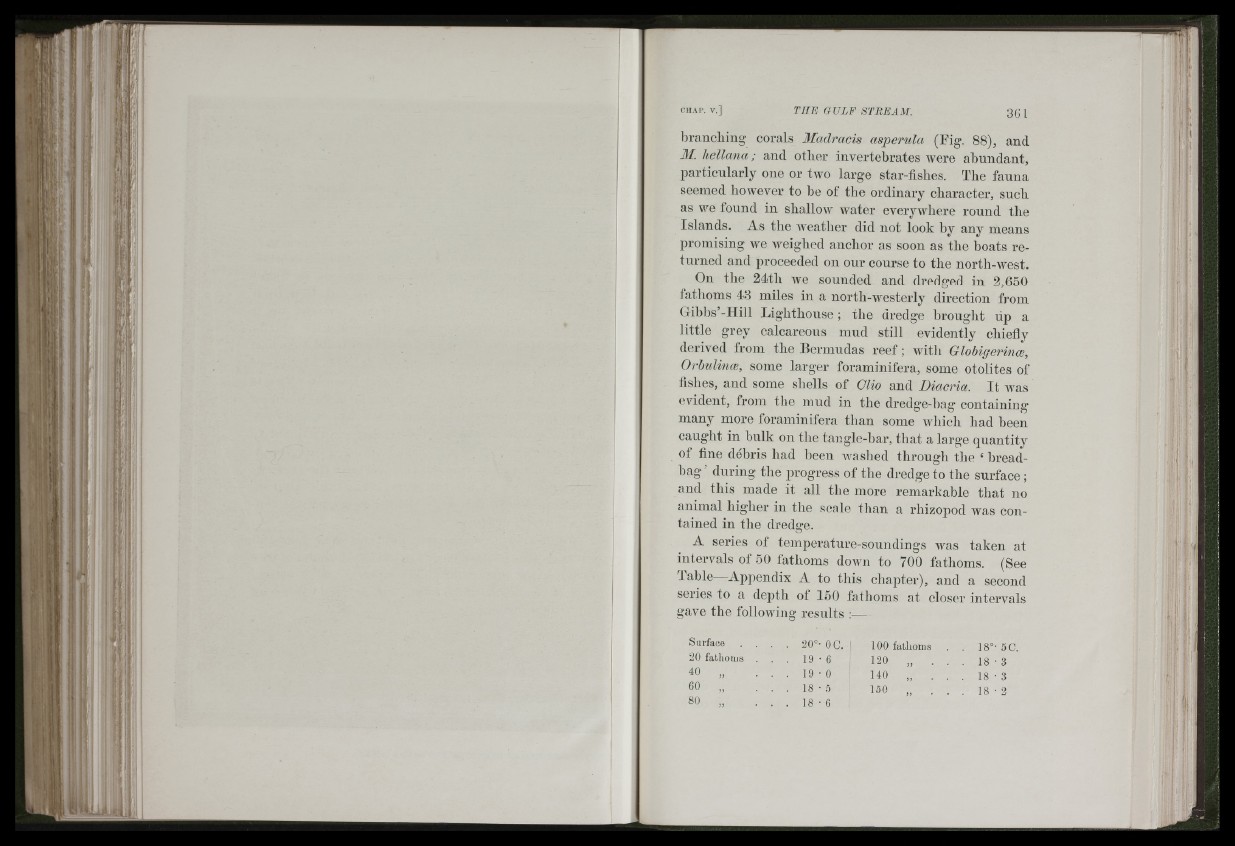
-f i
te! 4
■i ' J ; 'Â.
l u
b ran d lin g corals Madracis asperula (Fig. 88), and
M. hcllana; and other invertebrates were abundant,
particularly one or two large star-fishes. The fauna
seemed however to be of the ordinary character, such
as we found in shallow water everywhere round the
Islands. As the Aveather did not look by any means
promising we weighed anchor as soon as the boats re turned
and proceeded on our course to the uorth-west.
On the 24th we sounded and dredged in 2,650
fathoms 43 miles in a north-westerly direction from
Gibbs’-IIill Lighthouse ; the dredge brought up a
little grey calcareous mud still evidently chiefly
derived from the Bermudas reef ; Avitli Globigcrinoe,
OrbuUnoe, some larger foraminifera, some otolites of
fishes, and some shells of Clio and Diacria. I t was
evident, from the mud in the dredge-hag containing
many more foraminifera than some which had been
caught in bulk on the tangle-har, th a t a large quantity
of fine debris had heen washed through the ‘ hread-
hag ’ during the progress of the dredge to the surface ;
and this made it all the more remarkable th a t no
animal higher in the scale than a rhizopod was contained
in the dredsre.
A series of temperature-soundings was taken at
intervals of 50 fathoms down to 700 fathoms. (See
I able Appendix A to this chapter), and a, second
series to a dejoth of 150 fathoms at closer intervals
gave the following results
Surface . . , . 20°- OC. ! 100 fathoms . 18°-5 C.
20 falhotiis . ,, . 1 9 - 6 120 „ . . . 1 8 - 3
40 „ , . 19 • 0 140 „ . . . 1 8 - 3
60 „ . . 1 8 - 5 150 „ . . . 1 8 - 2
80 „ . 18 • 6
J |'!(l
ll I
i.i .